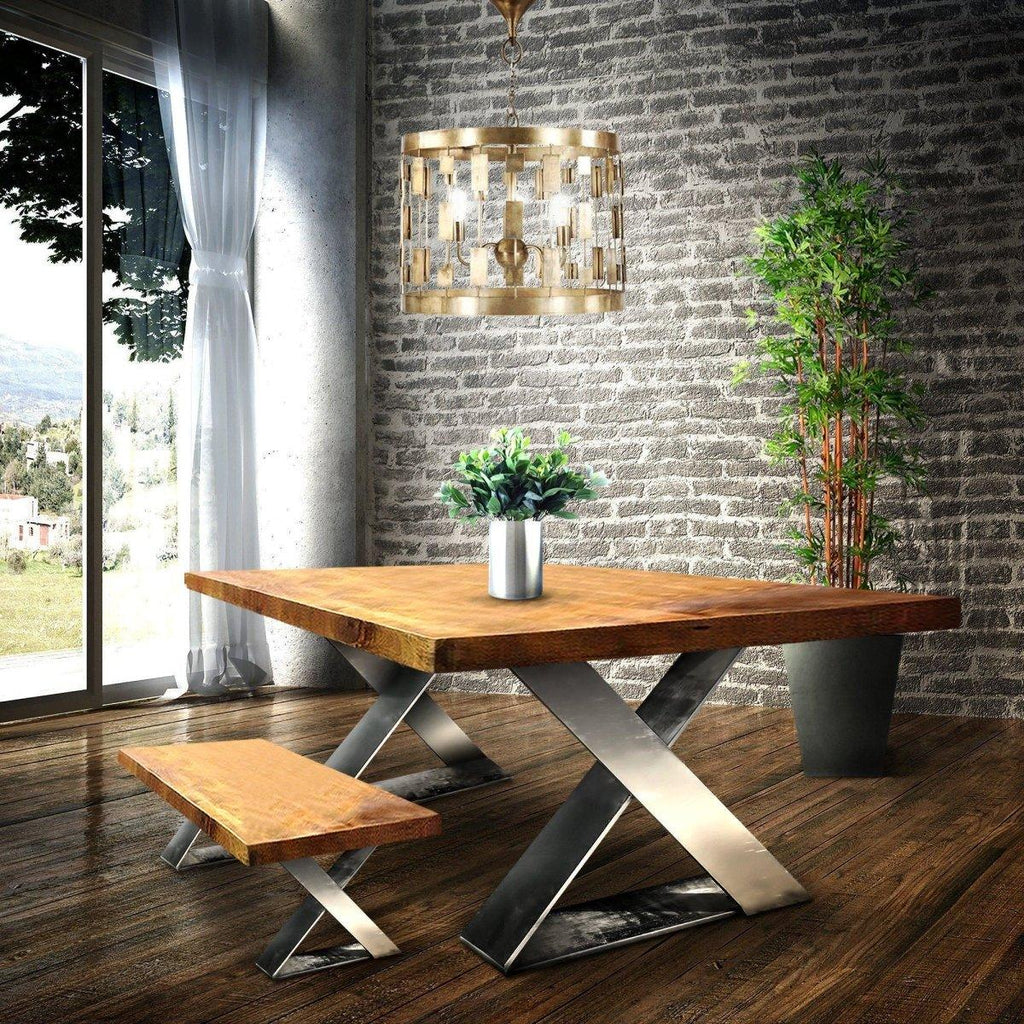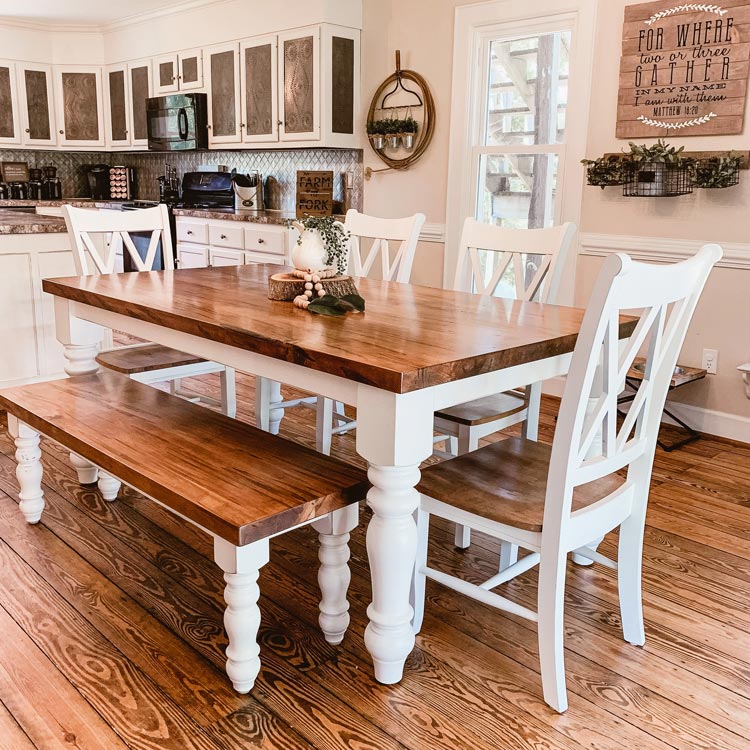How to Maintain and Care for Your Dining Room Table Legs
How to Maintain and Care for Your Dining Room Table Legs
Blog Article
Just How to Select the Perfect Dining-room Table Legs for Your Home Decoration
Choosing the suitable dining space table legs is a nuanced process that calls for mindful consideration of numerous components, including your space restraints, visual preferences, and sensible needs. The interaction in between styles, materials, and dimensions can dramatically influence the ambiance of your dining area, making it important to approach this choice systematically. As you contemplate the myriad alternatives readily available, it ends up being clear that the best selection prolongs beyond plain appearance; it can improve your general dining experience. What variables should you prioritize to guarantee your selection matches your home's distinct personality?
Assess Your Dining Area
Examining your eating room is crucial for picking the right table legs that match both visual appeals and performance. Begin by gauging the dimensions of your dining area, consisting of ceiling elevation, floor room, and distance to various other furniture. This details will assist figure out the appropriate size and height of your eating table, which directly influences the option of table legs.
Next, take into consideration the design and layout of your dining space. An open-concept design may profit from table legs that provide visual lightness, such as slender metal or acrylic choices. On the other hand, an extra traditional setup could require tough wood legs that offer a feeling of permanence.
Evaluate the existing shade combination and materials in your dining location. Balancing the table legs with these components develops a natural look that improves the overall design. Furthermore, believe about the capability needed in your space. If you frequently organize big celebrations, think about legs that provide added support and security.
Ultimately, a complete assessment of your dining room will lead you in making an educated choice, making certain that your table legs not only improve the aesthetic appeal however likewise offer functional purposes.
Consider Your Style Preferences
When choosing dining room table legs, it is important to review your personal design preferences, as they substantially influence the overall aesthetic of your dining room. Your choice of table legs can either complement or comparison with existing decoration, making it important to straighten them with your recommended interior decoration motif.
If your home leans towards a contemporary visual, consider smooth metal or minimal wood legs that supply a clean, uncluttered look. For a much more typical method, elaborate wood legs with complex carvings can add a touch of elegance and refinement. Industrial designs profit from durable, raw products such as redeemed wood and metal mixes, showing a sturdy charm.
Additionally, farmhouse and rustic styles typically favor durable, beefy legs that evoke a sense of warmth and comfort. Conversely, if your decoration is diverse, you might select unique shapes or a mix of materials to create aesthetic passion.

Evaluate Product Options
The selection of product for dining area table legs plays a pivotal role in both sturdiness and visual charm. Typical materials include wood, metal, and composite alternatives, each offering distinctive features that can affect the general look and durability of your table.
Timber is a timeless option, known for its heat and convenience. Woods like oak and walnut offer remarkable toughness and can be ended up in various stains to match any kind of decoration. Nevertheless, softwoods like want are much more prone to scrapes and dents, making them much less suitable for high-traffic areas.
Metal legs, frequently crafted from steel or light weight aluminum, show modernity and commercial appeal. They are resistant and highly durable to put on, making them ideal for households with children or frequent gatherings (dining room table legs). In addition, steel can be completed in various shades, enhancing the modification opportunities
Composite materials, such as MDF or laminate, deal affordability and varied designs. While commonly less durable than strong wood or steel, they can still provide an elegant appearance and are usually simple to keep.
Ultimately, the material you pick must straighten with your way of life, aesthetic preferences, and the level of use your table will certainly experience.
Determine Height and Size
Selecting the proper height and dimension for your eating area table is vital for both performance and comfort. The conventional elevation for dining tables typically ranges from 28 to 30 inches, permitting sufficient legroom for many people when seated. Nevertheless, it is essential to think about the dimensions of your dining area and the sorts of chairs you plan to utilize.

Furthermore, consider the proportions of your eating space. A bigger table in a sizable location can develop a grand setting, while a smaller sized table functions well in more intimate settings. Ultimately, the right height and size will certainly integrate with your total style and enhance the dining experience for you and your guests.
Explore Customization Possibilities

In addition, the style of the legs can be customized to fit various designs, such as rustic, contemporary, or industrial. Tapered legs can evoke a mid-century contemporary feel, while beefy, block-style legs may reverberate with conventional or farmhouse decoration.
House owners can also discover color coatings, from natural timber spots to paint, allowing them to match or contrast with the table top and bordering decor.
In addition, leg height can be gotten used to suit particular seating setups or personal preferences, boosting both comfort and performance.
Lastly, special embellishments, such as carvings or ornamental braces, can further individualize the table legs, making the dining experience not simply a meal yet a statement item in the home. By considering these modification options, homeowners can produce a dining area table that really reflects their uniqueness.
Verdict
Selecting the perfect dining-room table legs needs careful factor to consider of numerous factors, including the measurements of the eating area, design preferences, material longevity, and desired height. Modification options additionally improve the capability to achieve a cohesive aesthetic that enhances the general decoration. By methodically evaluating these components, homeowners can guarantee that the selected table legs not just fulfill functional demands however likewise contribute positively to the dining experience and ambiance of the home.
Selecting the suitable eating area table legs is a nuanced process that requires cautious consideration of various elements, including your room restraints, visual preferences, and useful requirements.Examining your eating room is important for choosing the right table legs that match both visual appeals and capability.When determining size, measure the location where the table will certainly be positioned to guarantee it fits comfortably, enabling for at least 36 inches of clearance around the table for easy movement. important source A larger table in a roomy area can produce a grand setting, while a smaller sized table functions well in more intimate settings.Choosing the suitable eating space table legs needs cautious factor to consider of various factors, consisting of the dimensions of the eating area, style choices, product longevity, and preferred height.
Report this page